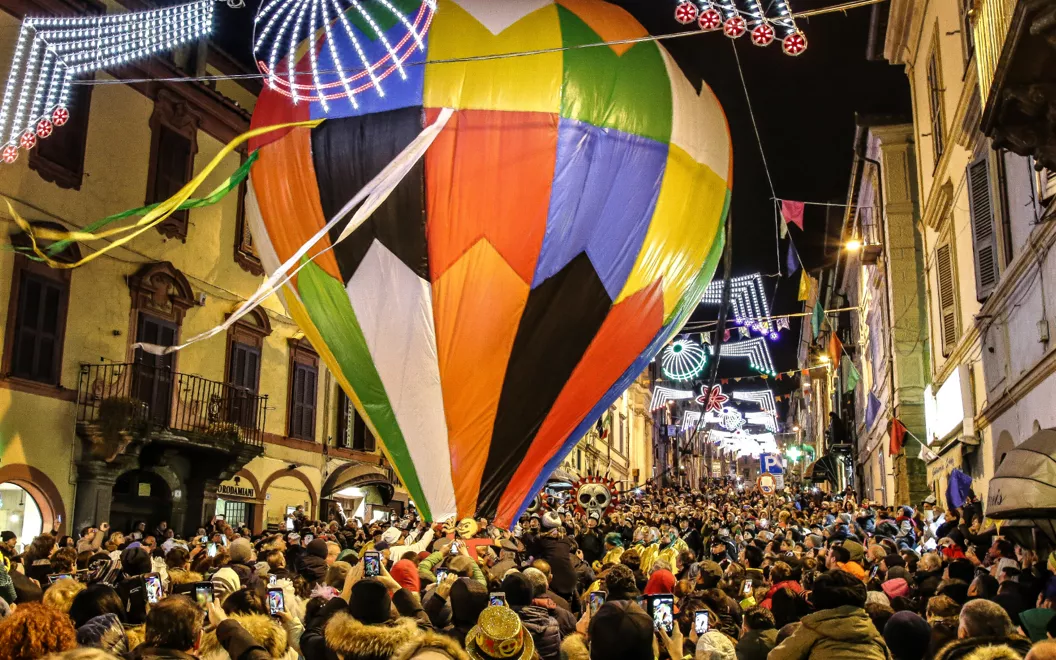The historical carnival of Ronciglione, amid tradition and jollity
3 minutes
All credit to the excellence of the local craftsmen
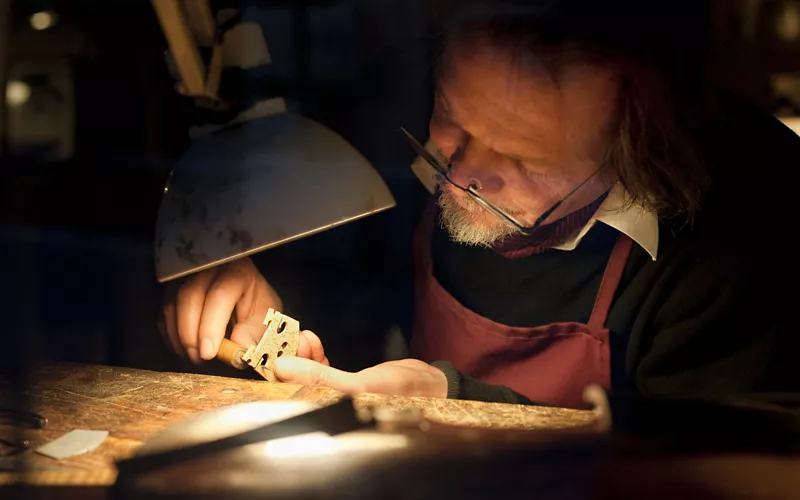
The carnival celebrations in this small town, formerly a territory of the ancient Papal State, date back to a tradition of the Roman Renaissance and Baroque carnival; to be precise, to the Public merrymaking that took place in the capital between the 16th and 17th centuries, during the Farnese period. For over 130 years, documents have recognised the official nature of this event with its decidedly popular character, which in the long months preceding the festivities involved the very high professional contribution of local craftsmen, from tailoring to theatre and craft workshops, from gastronomy to marching bands.
The Gala Course, a centuries-old ritual
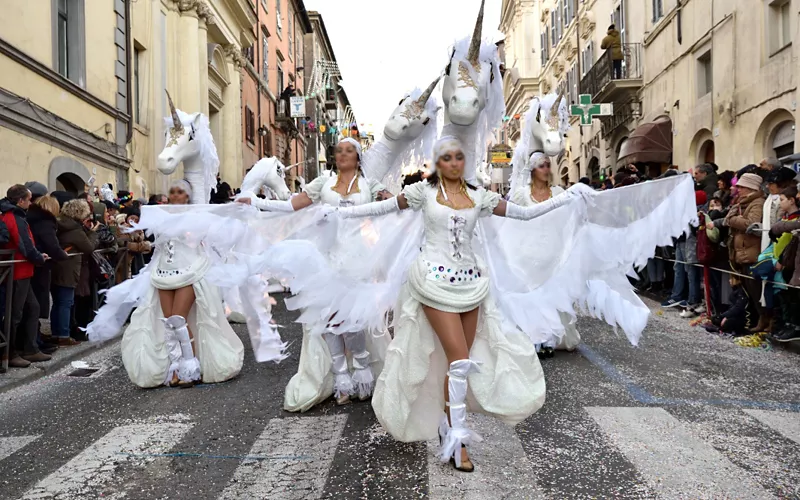
The Ronciglione Carnival officially begins when the people of Ronciglione roll out the red carpet to the King of Carnival. The celebrations, however, concentrated in the so-called “fat week”, are spread over the two, sometimes three, Sundays on which the popular Corso di Gala takes place, a parade that has been held for over 300 editions, in which the citizens participate by the thousands, donning colourful masks and costumes that highlight the inventiveness and excellence of local tailoring and craftsmanship, accompanied by allegorical floats, bands and folk-dance troupes.
Photo credit: Enrico Barbini
The descent of the hussars on horseback
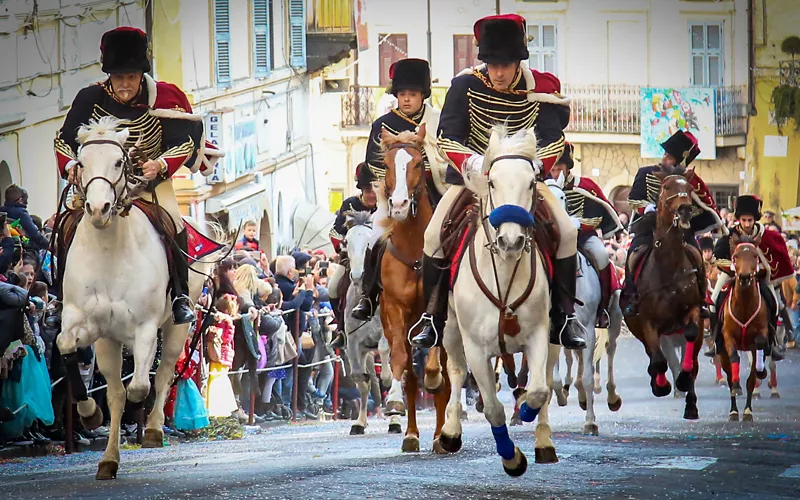
As every year, the event kicks off on Shrove Thursday with the spectacular ride of the hussars, a historical parade on horseback that dates back to the 18th century, when Ronciglione was under Napoleonic rule. Dressed in their resplendent 19th-century uniforms, a group of horsemen gallop through the streets of the town, evoking a local legend: it tells of a captain of the French hussars, posted in Ronciglione to defend the Papal State, who, in order to win the good graces of a local lady, paid homage to her by parading in front of her at the head of his dragoons.
The Army of the Red Noses
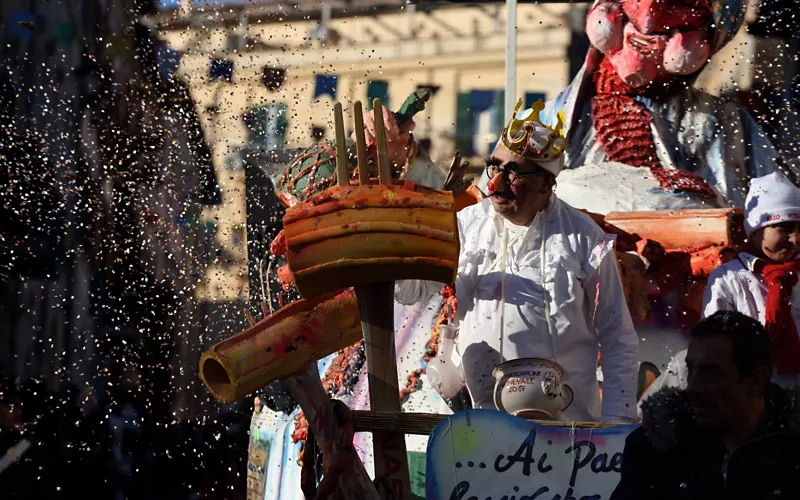
If you are in Ronciglione during Carnival time, you are sure to come across a grotesque character: he wears a white blouse, a white night cap and a garish red nose. In his hands he holds a wooden fork and a strange pot full of pasta (the local rigatoni). Don't take it to heart if he tugs at you or sneers at you…He's not bad, he's just drawn that way!
A contemporary of Pulcinella and Harlequin, the Red Nose is one of the oldest Italian masks. It is the soul of the caustic and irreverent spirit of the Ronciglionese Carnival. You will see hundreds of them, performing jokes, shenanigans and acrobatic forays into houses or dancing the traditional saltarello.
The procession of the Red Noses, members of a confraternity founded in 1900, is one of the most eagerly awaited fixtures of the Ronciglionese Carnival. It is held on the Monday, and their white-clad army parades through the streets of the town singing a hymn to wine, chasing onlookers, embarrassingly inviting them to taste the rigatoni al sugo contained in their chamber pots.
Photo credit: Enrico Barbin
Jotto Carnival, with pitalate and fregnacce
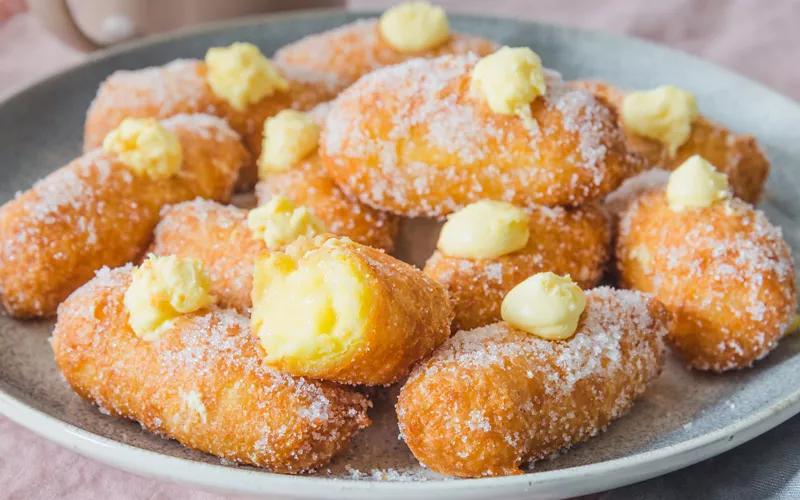
While Saturday, after the Carnival soapbox race (a bizarre parade of cars without engines) is the day of the Jotto Carnival, the gastronomic festival that gathers together polentari, fagiolari, tripparoli, frittellari and fregnacciari (fregnacce are typical pancakes rolled up and seasoned with sugar, pecorino cheese and cinnamon), Monday is the time for the ritual pitalata, during which the Red Noses distribute the macaroni kept warm in chamber pots, duly washed down with a good red wine.
A mournful farewell and a wild vigil
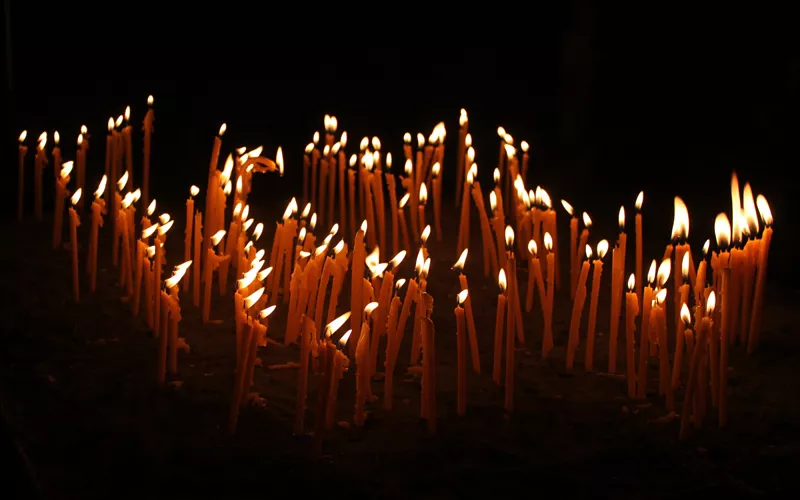
The festivities end on Shrove Tuesday, with the ritual of the death of King Carnival, the emotional funeral torchlight procession that wraps up the Carnival. Assisted by the cerusici, King Carnival's widows parade in graves before Death, who wields a long scythe, ready to kill the king. Directing the procession are the hooded members of the Company of Penitence, who are in charge of the king's funeral, and those of the Company of the Good Death, who perform the duties of the executioner. Represented by a large papier-mâché puppet, King Carnival is lifted into the sky aboard a colourful aerostatic globe. The carnival closes with a wild farewell wake, with music, wine and masked balls.

